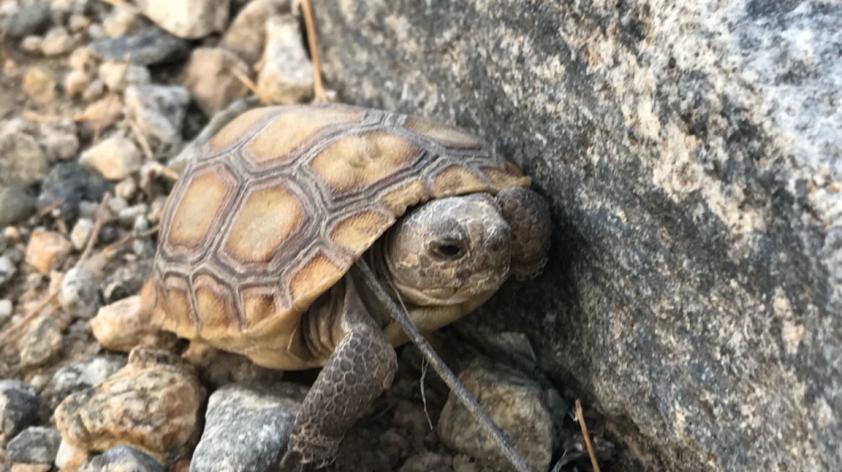
Calling on All Senses to Conserve Wildlife
As a Rookies for Recovery intern with the San Diego Zoo Institute for Conservation Research, all senses have to be on deck, especially when you are working alongside the Bureau of Land Management (BLM) in Palm Springs, CA.
The BLM plans and implements projects to aid in the recovery of numerous federally listed species, such as the desert tortoise, peninsular bighorn sheep, Coachella Valley milk-vetch, southwestern willow flycatcher, and many more.
I was able to research numerous federally listed species to help aid in writing environmental documents, such as grant proposals for population monitoring, building a new citizen science program, and restoration projects. Once a project has undergone planning, I can get my boots on the ground and use all of my senses to gather data to take on a project.
The first sense I bring to you is sight.
I use my sight to navigate the steep, rocky terrain of the Santa Rosa Mountains, trying to mimic the movement of a peninsular bighorn sheep, in order to locate natural and artificial wildlife water sources for water monitoring.
Another sense I utilize is hearing;hearing lets me listen to the warning of a rattlesnake or colleagues that holler out in excitement (or disappointment) on if they found the threatened Parish’s Daisy during focused surveys.
Touch helps guide me on a plant’s identity, such as the sandpaper plant; the leaves may remind you of a cat’s rough tongue.
The sense of taste(or knowledge not to taste) can also aid in a plant’s identity, for instance the jimson weed. While this plant has an alluring smell of peanut butter, it can be deadly if consumed. However, many other native plants can be tasted, like the sweet and nutty taste of the honey mesquite’sbean pods.
A great experience that I have had with the BLM focused on the sense of smell. Smell helped me distinguish the strong, repulsive aroma of the chuckwalla lizard scat over the earthy, hay smell of the desert tortoise scat; but have you ever thought smell alone could be used to locate a desert tortoise itself? If you are a dog, this is exactly what you would do.
I got to see this first hand when I worked with a non-profit organization, Conservation Canines, that utilizes dogs’ keen sense of smell in order to detect specific wildlife; our efforts focused on finding desert tortoise out in the Colorado Desert. The BLM biologist, the dog handler, the canine, and I surveyed for desert tortoises and their sign (burrows, scat, eggs, shell fragment and carcasses) in designated critical habitat. All senses were on the ground. It was an incredible experience to be a part of with 10 live desert tortoises found out of their burrows in the early morning during the peak of summer.
I have experienced all of the senses throughout my internship and I know more adventures are awaiting my senses. One thing to never forget is to couple these senses with intuition. Even intuition alone can save you from an incident; always trust your instincts!













